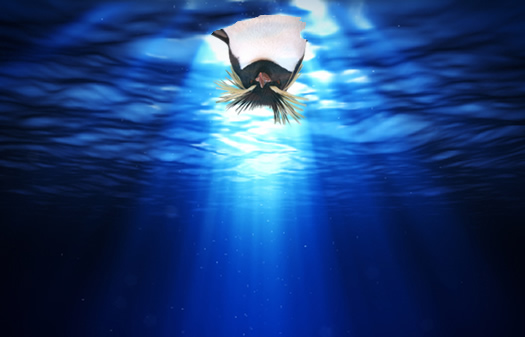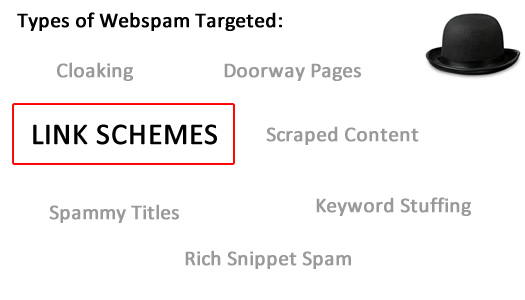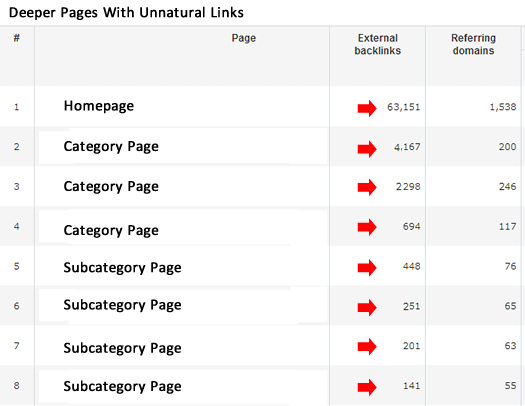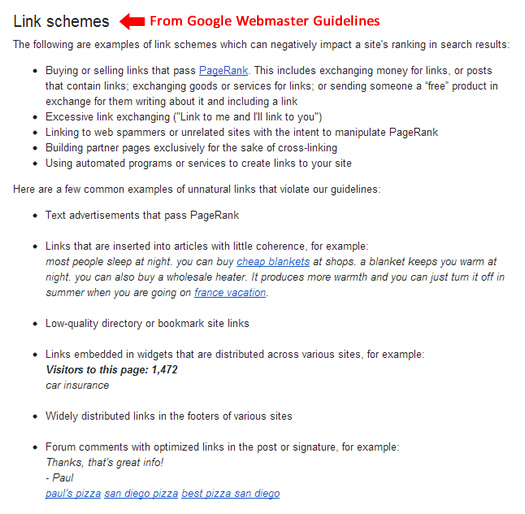
Penguin 2.0 launched on Wednesday, May 22nd, and it’s an update that most SEOs have been eagerly awaiting. Leading up to the rollout, all signs pointed to a nasty algorithm update that was going to be bigger and badder than the Penguin 1.0. There was a lot of speculation about how aggressive it would be, what it would target, and how much impact it would have across the web. Well, now that it rolled out, was it as nasty as many thought it would be? Did it target more types of webspam? And if you are hit, how can you recover? I’ll try and answer some of these questions below, based on analyzing thirteen sites hit by Penguin 2.0.
In addition to the official Penguin 2.0 update, there was a Phantom Update on May 8th, which could have been Penguin 2.0 being tested in the wild. I wrote a post explaining my findings, based on analyzing four (now seven) sites hit by that update. It’s important to read that post as well as this one, so you can start to understand the various factors that led to a drop in rankings and traffic for sites hit on that day.
Analyzing Penguin 2.0
Since Penguin 2.0 launched, I took the same approach that I took with Penguin 1.0. I’ve been heavily analyzing sites hit by our new, black and white friend. I’ve been monitoring webmaster forums, receiving emails from P2.0 victims, and digging into each site. My goal has been to identify consistent factors that impacted sites hit by the latest algorithm update. I have also been looking for any new additions that Penguin 2.0 might be targeting webspam-wise.
As of today, I have analyzed thirteen sites hit by Penguin 2.0 (I know, unlucky number). That includes drilling into their link profiles, reviewing their content, and deciphering what led to the Penguin hit. This post details my initial findings.
Deeper: Yes, Broader: No – Unnatural Links Still the Driving Force, Other Webspam Factors Not Being Targeted
As I explained earlier, we heard that Penguin 2.0 was going to be bigger and nastier than 1.0, but nobody knew exactly what that meant. Personally, I thought it could mean that more webspam tactics could be targeted, versus just spammy inbound links. In case you aren’t that familiar with Penguin 1.0, it heavily targeted unnatural links. If you had a spammy link profile, then you were susceptible to getting pecked. And a peck could mean a significant drop in Google organic search traffic (sometimes by over 90% overnight).
So, did Penguin 2.0 target additional forms of webspam? Not in my opinion. Again, I’ve analyzed thirteen sites hit by P2.0 and all of them had serious link profile issues. Some had more balanced link profiles than sites hit by Penguin 1.0, but you could easily see the gaming of links from a mile away. The heavy use of exact match anchor text stood out like a sore thumb. And some of the sites I analyzed had hundreds of thousands of links using exact match anchor text from questionable sites. More about those links and websites later in this post.

Homepage vs. Deeper Pages
The one important point to note is the “deeper” reference earlier. During Twig on 5/22, Matt Cutts announced the release of Penguin 2.0. During that interview, he explained that Penguin 1.0 only analyzed your homepage links and not pages deeper on your website. To clarify that point, your domain could still be hit, but Penguin 1.0 only analyzed the homepage link profile to identify the gaming of links. Looking back, I can see why they launched the first version of Penguin this way. There were many low quality sites using exact match anchor text leading to their homepages (in an attempt to rank for those keywords). That’s a good way to launch the first version of Penguin and see how it impacted sites across the web.
But Matt also explained that Penguin 2.0 now analyzed deeper pages on the site. And that line made a lot of sense to me… I had some companies reaching out to me after Penguin 1.0 launched complaining that their competitors were using the same tactics they were. They wanted to know why those companies weren’t getting hit! Now that we know Penguin 1.0 heavily analyzed the homepage, and didn’t take deeper pages into account, we understand that could be the factor that saved those companies (at least for the time being). Now that P2.0 is out, those companies using spammy links pointing to deeper pages very well could have gotten hit.

Am I Seeing The “Deeper Pages” Factor?
I am absolutely seeing websites using exact match anchor text leading to a number of pages on their sites (versus just the homepage). Actually, every one of the thirteen sites I analyzed had this issue. So Matt might be telling us the truth when he explained that Penguin 2.0 is deeper. But again, it’s not broader (taking other webspam tactics into account).
To quickly recap, I have not seen any sign that additional types of webspam were targeted by Penguin 2.0. It’s still extremely link-based. I have also seen sites with unnatural links pointing to deeper pages on the site get hit by Penguin 2.0.
Collateral Damage
During major algorithm updates, there are always webmasters that claim they were unfairly hit. That’s definitely the case sometimes, but I can tell you that I have not seen any collateral damage from Penguin 2.0 first-hand. All of the sites I have analyzed clearly had unnatural link issues. And some had extreme unnatural link issues that are going to take a lot of work to rectify… And yes, I can hear the frustration in the voices of the business owners calling me. Some have a long and tough road ahead of them if they want to recover.
Types of Unnatural Links Remain Consistent
When analyzing unnatural links of sites hit by Penguin 2.0, did the types of unnatural links change at all? Not from what I can see. I saw many familiar link types, including comment spam, article sites, spammy directories, blogroll links, link networks (public and private), etc. Basically, the same types of link manipulation are being targeted by Penguin 2.0 as were targeted by Penguin 1.0 (based on my analysis).
And similar to what I saw with Penguin 1.0, risky sites continually showed up in link profiles. For example, attack sites, sites hit by malware, etc. I’m not saying that getting hit by malware, or sites that are hacked, get targeted by Penguin 2.0, but a long-term issue without fixing problems like that is a clear signal about the quality of the site. Think about it, most webmasters hit by malware, or that are being flagged as an attack site, would fix those problems asap. They wouldn’t let it sit for weeks or months. I noticed the same situation when analyzing sites hit by Penguin 1.0.
In case you are wondering what a link scheme is, here is a screenshot from Google Webmaster Guidelines listing various types of link schemes:

What To Do If You’ve Been Hit
Similar to Penguin 1.0, you need to heavily analyze your link profile to identify unnatural links. You should organize them by quality and start to create a master list of links to nuke. And by “nuke”, I don’t mean you should simply disavow all of the unnatural links. Google wants to know that you tried as hard as possible to manually remove them. That means setting up a communication plan to webmasters in control of sites that contain spammy links leading to your website. No, that process isn’t easy, and you can expect a lot of interesting messages back (with some people trying to charge you for link removal). You can also 404 pages receiving spammy links, but that obviously guts the content on your site. That’s not the best approach for all situations.
Once you work hard to remove as many links as possible, you can absolutely use the disavow tool for the remaining links. But again, that shouldn’t be used for the majority of links… Once you take care of the link situation, you’ll need to wait for another Penguin update in order to see positive movement. Then again, I have seen Penguin updates during Panda updates (which makes me think they are connected somehow). You can read my Penguin recovery case studies to learn more about how my clients recovered from Penguin 1.0.
Penguin 2.0 – Now is the time to take action
That’s what I have for now. I’ll continue analyzing websites hit by Penguin 2.0 and will write follow-up posts covering additional findings. I’m already helping several clients with dealing with Penguin 2.0, and I anticipate helping more in the coming weeks and months. If you have any questions, feel free to post them in the comments. Good luck.
GG

Hi,
what about the links from sites like mrwhatis.com, askives.com and other sites like these because i have many back links from these site. I don’t know what to do are these links good or bad. For now i blocked visitors from these sites using htacess rule.
I wouldn’t worry about those links. They aren’t malicious in nature. The links that Penguin targets are much more egregious than those… and you can spot them a mile away (and so can Google).
There are sites that Google simply discounts, based on how they aggregate content and provide links. Then there are spammy directories, comment spam, link directories, etc. There’s a huge difference. :)
From my analysis till now, I feel that Google has included newer technology to find out link spam more effectively but certainly not added any new factor in it. I think factors in both Penguin 1 & 2 are remain the same.
Right, the factors definitely seem the same for Penguin 2.0 (for now). :) I still believe it will expand to targeting other forms of webspam. It has to… That said, Google could be working on another algo update that targets more on-site webspam. That’s very possible.
Definitely. As on-site spam can be analyzed much better than off-site, so Google gives more important to it now. Even I’ve known many sites with more than 90% directory links and other non-relevant links are still rank in 1st page. Of course, these sites are local and their targeted keywords have low search volume. But the on-site factors are optimized accurately. That’s I think Google tries to devaluing the off-site factors than penalizing them.
Here’s the $million dollar question – did Google factor in the disavow link tool to it’s Penguin 2.0 update? I doubt it, or there would have been many more recoveries (maybe not full recoveries, but movement upwards at least). Point being that Google shouldn’t release a disavow tool if it’s not really for helping webmasters.
The disavow tool isn’t just for Penguin victims. It’s for any site hit with an unnatural link penalty. You can read my case study about a Penguin recovery to learn how I used it to help a client -> http://www.searchenginejournal.com/thankful-for-penguin-recoveries-during-panda-updates-disavow-tool-case-study/52265/
What is the rationale behind not just disavowing all the spammy links? Why go to the effort of trying to remove them? You may remove them, then somebody may replace them (e.g. if a directory gets hacked they may roll the server a few weeks).
I recently sent my first disavow report. Many of the links were on directories that are no longer indexed by google, and some report malware. I do not feel comfortable even opening talks with some of these sites.
But, you are not the first person to say try to remove the links and then disavow. But, others have said to use disavow to take a machete to your bad links, suggesting that attempted removal first is not required.
There are a few ways to think about this. First, Penguin isn’t the only way that sites are getting hit for unnatural links. There are plenty of sites getting hit with a manual penalty. If that’s the case, then Google wants to see that you’ve tried your hardest to manually remove spammy links. When filing a reconsideration request, that should be documented in detail (and can help you get the penalty lifted easier than trying to disavow all the spammy links in one shot).
For Penguin, which is algorithmic, it’s still best to manually remove those links if you can and then disavow what you can’t remove. By the way, I’m a also a firm believer in filing a reconsideration request when you are hit by Penguin (in order to get your hard work into the hands of a Google employee). If you do, then your manual removals can be documented in the reconsideration request. You can read my Penguin recovery case studies to learn more (listed in my post).
But I hear your point, and for some sites it might make sense to disavow a good number of links. It really depends on the situation at hand. I hope that helps.
Gabe, good analysis. I help with a site that got hit with penguin 1.0 and on penguin 2.0 they actually went up without doing much. They didn’t do any disavows or anything like that, they just built brand name.
I agree its still link based, however this ‘refresh’ may have taken into account the new brandname/authority links and that is why the site went up slightly.
I would love to show you :)
Wow, very interesting case. I’d love to check it out if you want to share any data (or just the domain). If you want to email me, you can via my contact page.
I’m glad I found an article about this. I run the website for my company and we were sort of hit by penguin. Here’s the story.
On the 22nd of May, our bounce rate was hit huge. I went from a constant below 5% bounce rate and then in one day jumped to about 50% bounce rate.
The reason I think it’s P2.0 is that it happened on the day it went into effect.
My industry is the kind that doesn’t promote a lot of bounce rate. If the search is done right, most people stick around because we have what they are looking for in general.
My questions is, how do I know if I’m hit by P2.0 and would a Bounce Rate hit be part of this. Because my traffic actually wasn’t hit that bad.
Here is the website: http://www.floridoutdoorsrv.com
I know I have some linking that isn’t favorable, and hopefully will be working on that in the next coming months.
Any feedback is appreciated!
If you were hit by Penguin 2.0, then you need to heavily analyze your inbound links. That’s the problem, and not a higher than normal bounce rate. Quickly checking your links reveals the problem. Check the exact match anchor text leading to your site. That will lead you to the problematic links. :) You need to remove those links, and then disavow the rest. Hope that helps.
It does help, but I’m still trying to figure out the bounce rate. The reason I’m coming back to that, is that it jumped from %5 to about %50 in about 1 day. And it changed on the same day P2.0 went out. Would my poor inbound links effect that at all?
Definitely strange. So, on 5/22, your bounce rate jumped? I would have to analyze your reporting to see what happened there, which content spiked, where the traffic was coming from, etc. Has the higher bounce rate remained?
I have made a analysis of fine site which was working fine in Penguin 1.0 update and the bad links from not much for home page. Now in 2.0 update site hit because of bad links to internal pages. Theory is correct in my opinion
Great article, thanks! Quick question (I can guess the answer but I want to throw it out there)- If I have sites with links that I determined to be unhealthy but these sites went unscathed through the Penguin update how urgent is their removal? In other words, if a link made it through the updates is this any indication that it may not be a “bad” link according to the algo? We have a lot of spammy directory links from some bad linking practices a few years back but we have been running a clean ship ever sense. Any thoughts would be great.
Emily, based on my Penguin work, I can spot an unnatural link from a mile away. For those types of links, I would absolutely try and remove them. If you can’t remove them, disavow them. There are manual penalties, along with algorithmic updates like Penguin, so I would look to remove any unnatural links you might have. I hope that helps.
Great Article Glenn. A quick question. I’ve two websites. I’ve put links with proper keywords to the 2nd website in all the page (footer, header as well as sidebar) of the first website ( around 30,000 pages). Good? Bad? What do you advice? Thanks a million in advance.
I would be very careful with that approach. It very well could backfire on you. I’ve helped several companies that used similar tactics and it didn’t work out very well for them. I hope that helps.
Excellent article.
My site had been badly hit by the panda update, but we fully recovered quickly. The first version of penguin didn’t hit me at all. We even noticed a minor improvement in the traffic, but the second version was different. We have lost nearly 30% traffic since May 22. I haven’t bought even a single link, but I have participated in some link exchange schemes. Basically I will add one link to their site from the links directory of my site and they will link back to me.
Now when I check my webmaster tools data, I can see that for every link I exchanged I have got hundreds (sometimes even thousands) in return. For example, I have over 11,000 links from one site and their link appears only once on my site. I don’t how these happens. Removing that link will probably be easy. I just need to remove their links from my site and they will probably remove mine from their site. But I am worried about losing all those links at once.
My question is: Do these links carry any value? Should I get them removed? When you get a few hundred links from one site, do they really have a value. Any advice will be appreciated.
Thanks and regards
Manjusha
Thanks for your comment Manjusha, and I’m sorry to hear you were hit by Penguin. You definitely need to stay away from any type of unnatural linkbuilding, including link exchanges. I haven’t analyzed your link profile, but those are very risky links Penguin-wise.
I highly recommend stopping participating in the link exchange immediately, remove any links from your site to others, and then remove as many from others sites to yours as possible. If you can’t, then use the disavow tool (on a domain basis).
If you want to send along your domain name, I can quickly check out your profile. Thanks again.
I was not affected by Penguin1 at all, but was affected by Penguin2. If 2 is the same as 1, but just a bit deeper, why have I only been affected now?
The only SEO I have done in the last few years is directory submissions (home page, not internal) and guest blogging (mostly all homepage).
Confused.
Jon, I would have to analyze your site and link profile to better understand your specific situation. It could be a number of things, including the number of links increasing over time, more to inner pages than you think, etc. If you want to email me your domain, you can via my contact page. Thanks.
Great article as always.
I have been reading your articles for more than a year, ever since Penguin 1.0 was launched in April 2012 and I would like to tell you that your article called “7 More Penguin Findings: An Update From the Over Optimization Front Lines” probably saved my business. In a sea of articles that talked about Penguin, yours was the only one that made sense.
We manage about 150 sites and we were using them as a private network with a lot of cross linking. In the first strike we lost about 17 sites and thanks to your article, we immediately removed all cross links; preventing more sites from getting hit. After a year we have managed to recover about 12 of the sites that were hit badly and only 5 were lost forever. So, my eternal gratitude to you.
Sadly, this time around, our main site has gotten hit. It’s worth mentioning
that our main site didn’t get hit by Panda, Penguin 1.0 nor any other update since, until May 16th 2013 when it took a dive from being in the top 3 places for all of our keywords to now place 10, 11, 16 in SERPS; causing a 60% to 70% decrease in traffic. As you can imagine, we are really struggling. We are implementing all your recommendations, and we are hopeful we will recover soon. The thing that we can’t quite put our finger on is what hit us. The drop is very clear for the 16th of May but according to the dates that are being mentioned, Phantom was launched on the 9th of May and Penguin 2.0 was launched on the 22th of May. Any thoughts?
Thanks,
Tomas
Wow, very interesting Tomas. And I’m glad my previous posts helped you out. Which countries are you targeting? I’ve heard some countries saw Phantom-like hits later than the 9th. If you want to send me more information about this, you can email me via my contact page. It would be great to take a look if possible (since it’s hard to say what happened without reviewing your site, analytics, etc.)